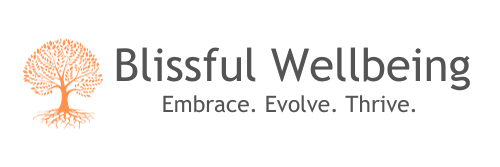
Introduction: The Power of Effective Public Speaking
Public speaking, often deemed a daunting task, is a powerful skill that empowers individuals to communicate with impact, influence, and confidence. It is a proficiency that extends beyond the stage, influencing career trajectories, personal relationships, and the ability to convey ideas persuasively. In this comprehensive guide, we invite you to embark on a journey of mastery with our blog post, “Public Speaking Pro: 9 Tips from A Pocket Guide.”
The ability to articulate thoughts coherently and persuasively is a valuable asset in various aspects of life. Whether you’re presenting to a large audience, engaging in a team meeting, or expressing your thoughts to friends and family, the principles of effective public speaking remain consistent. This guide is designed to be your pocket-sized companion, providing insights and strategies to enhance your public speaking prowess and instill confidence in your communication skills.
Public Speaking Pro: 9 Tips from A Pocket Guide
Tip 1: Mastering the Art of Preparation
At the heart of impactful public speaking lies the art of preparation. Crafting compelling content is the foundational pillar of any successful speech. It involves not just stringing words together but strategically developing content that captivates your audience. Understanding the nuances of constructing a persuasive narrative is crucial, and this tip serves as your compass in navigating this terrain.
Table of Contents
ToggleBegin by delving into the techniques that transform ordinary content into a compelling story. This includes mastering the use of anecdotes, statistics, and relatable examples to resonate with your audience. Explore the importance of structuring your speech coherently, ensuring a logical flow that keeps your listeners engaged from start to finish.
Rehearsal strategies play a pivotal role in transforming preparation into poa lished performance. The goal is not just familiarity with the content but a mastery that allows you to deliver it with authenticity and confidence. Techniques for effective rehearsal involve more than mere repetition; they encompass understanding pacing, emphasis, and non-verbal cues that contribute to a well-rounded delivery.
By mastering the art of preparation, you lay the groundwork for a speech that not only imparts information but leaves a lasting impact on your audience. This foundational tip sets the tone for the subsequent insights, emphasizing that the journey to becoming a Public Speaking Pro starts with thoughtful and strategic preparation. Stay tuned as we unravel the remaining eight tips to guide you through this transformative process.
Tip 2: Navigating Nervousness and Building Confidence
Public speaking often goes hand in hand with a common adversary: stage fright. The second tip in our guide, “Public Speaking Pro: 9 Tips from A Pocket Guide,” addresses this universal challenge head-on. It’s not just about overcoming nervousness but transforming it into a source of power that contributes to dynamic and engaging presentations.
Overcoming Stage Fright with Confidence-Building Strategies
Stage fright is a natural response to the pressure of addressing an audience. However, understanding and managing this anxiety is key to delivering a confident and impactful speech. Confidence-building strategies are essential tools in your public speaking arsenal. These strategies go beyond mere positive affirmations; they delve into practical techniques that bolster your self-assurance.

Begin by embracing the power of positive visualization. Envision yourself on the stage, successfully delivering your speech with poise and confidence. This mental rehearsal helps create a positive expectation for the actual performance. Additionally, adopt physical strategies such as power posing or controlled breathing to induce a sense of calm and confidence.
Mindfulness Techniques for Calming Pre-Speech Jitters
Mindfulness, the practice of being present in the moment without judgment, is a powerful antidote to pre-speech jitters. Incorporating mindfulness techniques into your pre-speech routine helps center your mind and alleviate anxiety. Techniques such as deep breathing, meditation, or grounding exercises bring your focus to the present, diminishing the influence of anxious thoughts.
Transforming nervous energy into a powerful tool requires a shift in perspective. Rather than viewing nervousness as a hindrance, recognize it as a natural part of the speaking process. Channel this energy into enthusiasm and passion for your topic, allowing it to infuse your presentation with authenticity and energy.
Tip 3: Connecting with Your Audience
The effectiveness of a speech extends beyond the words spoken; it hinges on the ability to genuinely connect with the audience. Tip 3 in our pocket guide emphasizes the vital aspect of audience engagement and provides strategies for building an authentic connection from the podium.
The Importance of Audience Engagement in Public Speaking
Understanding that public speaking is a two-way street is fundamental. It’s not just about delivering information; it’s about creating an experience for your audience. Acknowledge the importance of audience engagement in capturing and maintaining their attention. A connected audience is more likely to absorb and remember your message.
Strategies for Building a Connection from the Podium
Building a connection with your audience involves various strategies, starting with knowing your audience. Tailor your message to resonate with their interests, needs, and expectations. Use relatable anecdotes or examples that make your content accessible and relevant to your listeners.
Explore the power of eye contact. Establishing and maintaining eye contact fosters a sense of intimacy and connection. It communicates authenticity and sincerity, making your audience more receptive to your message.
Incorporate interactive elements into your presentation. Encourage questions, conduct polls, or include moments of reflection. These interactive components create a dynamic and participatory atmosphere, further enhancing audience engagement.
Tip 4: Perfecting Your Delivery Style
The art of public speaking goes beyond the mere arrangement of words; it’s an intricate dance of tone, body language, and voice modulation. Tip 4 in our guide, delves into the importance of perfecting your delivery style. This tip emphasizes the significance of these elements in effective communication and creating a lasting impression on your audience.
Polishing Your Speaking Style: From Tone to Body Language
Your speaking style is the vehicle through which your message travels to the ears and minds of your audience. Paying meticulous attention to your tone, body language, and voice modulation is akin to polishing this vehicle to ensure a smooth and impactful journey.
Begin by refining your tone. Your tone sets the emotional tone of your speech. Whether conveying enthusiasm, empathy, or urgency, your tone should align with the message you wish to impart. Practice modulating your tone to add depth and nuance to your delivery.

Body language is a powerful non-verbal communicator. Your posture, gestures, and facial expressions contribute significantly to how your message is received. Maintain an open and confident posture, use purposeful gestures, and let your facial expressions align with the emotions conveyed in your speech.
Voice modulation is the dynamic alteration of pitch, tone, and pace in your voice. A monotone delivery can be monotonous for your audience. Experiment with varying your pitch to emphasize key points, adjusting your tone to match the mood of your message, and modulating your pace to maintain engagement.
These elements collectively contribute to the overall impression you leave on your audience. A polished delivery style enhances the clarity and impact of your message, making it more memorable and compelling.
Tip 5: Utilizing Visual Aids Effectively
Effective public speaking isn’t confined to verbal eloquence alone; it also involves leveraging visual aids to enhance your message. Tip 5 provides insights into how to effectively use visuals, exploring the dos and don’ts of incorporating slides and props.
Enhancing Your Message with Visuals
Visual aids serve as a dynamic complement to your spoken words. They have the power to reinforce key points, clarify complex ideas, and capture and maintain your audience’s attention. Whether using slides, props, or other visual elements, the goal is to enhance your message rather than distract from it.
Explore the different types of visual aids available. Slides can include images, graphs, or concise text that supports your spoken words. Props, when used thoughtfully, can provide tangible examples that resonate with your audience. Consider the venue and the preferences of your audience when selecting the most suitable visual aids.
Dos and Don’ts of Incorporating Slides and Props
Strike the right balance between visual aids and verbal communication. Dos include ensuring that visuals are clear, relevant, and visible to everyone in the audience. Use a readable font size, limit text to essential points, and incorporate visuals that align with your message.
Don’t overwhelm your audience with a barrage of slides or props. Keep visual aids concise and focused. Avoid using visuals as a crutch; they should enhance, not replace, your verbal communication. Practice your speech with the visuals to ensure seamless integration into your delivery.
Tip 6: Handling Q&A Sessions with Grace
The spotlight shifts to the interactive phase of public speaking with Tip 6 in our guide. Navigating the unpredictable terrain of Q&A sessions requires preparation, finesse, and the ability to turn challenging queries into opportunities for connection and expertise showcase.
Prepare for and Navigate Audience Questions Seamlessly
The Q&A session is a unique opportunity for direct engagement with your audience. To handle it with grace, meticulous preparation is key. Anticipate potential questions related to your topic, ensuring you have a thorough understanding of your subject matter. Consider conducting a mock Q&A session with a colleague to simulate the dynamic nature of audience inquiries.
During the actual Q&A, maintain composure and actively listen to each question. Before responding, take a moment to gather your thoughts. Responding thoughtfully is more valuable than providing an immediate answer. If a question is unclear, seek clarification to ensure you address the audience member’s concern accurately.

Turning Challenging Queries into Opportunities
Challenging questions are inevitable, but they also present an opportunity to showcase your expertise and connect with your audience on a deeper level. Approach challenging queries with a positive mindset, viewing them as a chance to demonstrate your knowledge and problem-solving skills.
If faced with a challenging question, acknowledge the complexity and express gratitude for the inquiry. Break down the question into manageable parts, providing a structured and comprehensive response. If you don’t have an immediate answer, offer to follow up after the session, reinforcing your commitment to providing accurate information.
Handling Q&A sessions with grace not only demonstrates your expertise but also fosters a sense of trust and connection with your audience. It transforms the post-presentation interaction into a valuable dialogue, enriching the overall experience for both you and your listeners.
Tip 7: Overcoming Common Public Speaking Challenges
Public speaking, while rewarding, is not without its challenges. Tip 7 equips you with strategies to tackle common hurdles such as technical issues, unexpected hiccups, and moments of forgetfulness. These strategies are designed to help you address challenges smoothly and maintain your composure in any situation.
Strategies for Handling Technical Issues and Unexpected Hiccups
Technical glitches and unexpected hiccups are part and parcel of public speaking. The key is to be prepared for the unforeseen. Familiarize yourself with the venue’s technology beforehand, and have a backup plan in case of technical failures. Carry essential accessories like charging cables, adapters, or backup slides to mitigate potential disruptions.
If faced with technical issues during your presentation, remain calm and composed. Communicate the issue transparently to the audience, and reassure them that you’re addressing the problem. Maintain flexibility in your presentation style, adapting to the situation without compromising the integrity of your message.
Addressing Forgetfulness and Recovering Smoothly
Forgetfulness can happen to even the most seasoned speakers. The crucial skill is in addressing it gracefully. If you find yourself momentarily blanking on a point, take a deep breath, and consider using a placeholder phrase while you gather your thoughts. Alternatively, revisit the previous point to provide context and buy yourself time.
If you’ve completely forgotten a section, don’t dwell on the lapse. Apologize briefly, then either revisit the point or gracefully move forward. The audience is more likely to empathize with a speaker who handles forgetfulness with composure.
Tip 8: Post-Speech Strategies for Success
Tip 8 in our guide, “Public Speaking Pro: 9 Tips from A Pocket Guide,” delves into the often overlooked but crucial phase of post-speech strategies. This tip emphasizes leveraging post-speech feedback for continuous improvement and sheds light on the importance of networking after your presentation.
Leverage Post-Speech Feedback for Continuous Improvement
The end of your speech doesn’t mark the conclusion of your public speaking journey; it initiates the phase of reflection and refinement. Actively seek feedback from peers, event organizers, or audience members. Constructive criticism is a powerful tool for growth, offering insights into areas of strength and areas that warrant improvement.
Approach feedback with an open mind, focusing on specific aspects such as delivery, content, and engagement. Use feedback as a roadmap for continuous improvement. Consider recording your speeches to review your performance objectively, identifying patterns and areas for enhancement.
After receiving feedback, formulate an action plan for refinement. This might involve refining your delivery style, adjusting content for clarity, or addressing specific audience concerns. The commitment to continuous improvement positions you as a dynamic and adaptable speaker.
Discover the Importance of Networking After Your Presentation
The connection doesn’t end when you step off the stage; it evolves into the realm of networking. Tip 8 underscores the significance of building relationships in the aftermath of your speech. Networking is a potent tool for opening doors to future opportunities, both professionally and personally.
Engage with audience members who approach you after your presentation. Express gratitude for their attendance, and be genuinely interested in their thoughts and insights. Establishing a personal connection creates a positive and memorable impression.
Networking extends beyond immediate interactions. Leverage social media platforms to connect with attendees, event organizers, and fellow speakers. Share highlights from your speech, express gratitude, and continue the conversation online. This digital engagement contributes to an ongoing relationship and expands your professional network.
As you navigate post-speech networking, consider sharing your contact information and expressing interest in future collaborations or discussions. Building relationships in the aftermath of your presentation not only enhances your professional network but can lead to invitations for additional speaking engagements, collaborations, or partnerships.
Tip 9: Continuing Your Public Speaking Education
Public speaking, like any skill, thrives on continuous learning and adaptation. Tip 9 encourages you to explore resources for ongoing education and improvement, emphasizing the importance of staying updated on trends and best practices in the dynamic world of public speaking.
Explore Resources for Ongoing Learning and Improvement
The field of public speaking is ever-evolving, with new techniques, technologies, and methodologies emerging regularly. To stay at the forefront of this dynamic landscape, explore a variety of resources for ongoing learning. This may include books, online courses, podcasts, or attending workshops and conferences.
Books authored by renowned public speakers provide valuable insights and perspectives. Online courses, offered by platforms like Coursera or Udemy, allow you to delve into specific aspects of public speaking or explore related skills such as storytelling and leadership.

Podcasts featuring discussions by experts in the field offer a convenient way to absorb knowledge on the go. Additionally, attending workshops and conferences provides opportunities for hands-on learning, networking with professionals, and gaining exposure to the latest industry trends.
Stay Updated on Trends and Best Practices
The public speaking landscape is influenced by societal trends, technological advancements, and evolving audience preferences. Staying updated on these trends ensures that your speaking style remains relevant and resonates with contemporary audiences.
Subscribe to newsletters, follow industry leaders on social media, and participate in online forums dedicated to public speaking. Engage in conversations about emerging trends, share your experiences, and learn from the experiences of others in the field.
Cultivate a Mindset of Continuous Improvement
The journey to becoming a Public Speaking Pro is a continuous one. Cultivate a mindset of continuous improvement, viewing each speaking opportunity as a chance to learn and grow. Embrace challenges as opportunities for refinement, and celebrate successes as milestones in your evolution as a speaker.
Conclusion: Empowering Yourself to Become a Public Speaking Pro
As we bring our exploration to a close, the concluding chapter serves as a powerful reminder of the transformative journey you’re poised to undertake. Summarizing the nine tips for public speaking success, this conclusion is the beacon that empowers you to ascend to the realm of a true Public Speaking Pro.
Armed with this comprehensive pocket guide, you now possess the tools to not just communicate but to communicate with confidence, captivate your audience, and etch a lasting impression each time you step onto the stage. It’s more than a guide; it’s a roadmap to reinvent the way you approach public speaking. Public Speaking Pro is not merely a title; it’s an invitation to transform this skill into a mastered art—one that you can relish and excel in.
This guide demystifies the complexities of public speaking, breaking it down into actionable steps that cater to every facet of the craft. From mastering the art of preparation and overcoming nervousness to perfecting your delivery style, utilizing visual aids effectively, and handling Q&A sessions with grace, each tip is a building block in the construction of your public speaking prowess.
The conclusion underscores the holistic nature of the journey, emphasizing that these tips are not isolated techniques but interconnected elements contributing to your overall growth. It signifies not just the end of a guide but the commencement of a continuous evolution. Armed with these insights, you’re not just a speaker; you’re a Public Speaking Pro.
As you step forward, remember that each presentation is an opportunity for refinement, each challenge is a stepping stone to mastery, and each audience interaction is a chance to forge meaningful connections. This conclusion marks the beginning of a new chapter—a chapter where you don’t just speak to an audience; you engage, inspire, and lead. Embark on your journey as a Public Speaking Pro, and may every stage you grace become a canvas for your confident and impactful communication.
Additional Recommendations and Further Reading
5 Best books on public speaking:
- Speak With No Fear: Go From a Nervous, Nauseated, and Sweaty Speaker to an Excited, Energized, and Passionate Presenterby Mike Acker
- Public Speaking for Authors, Creatives and Other Introvertsby Joanna Penn
- Public Speaking: How to Destroy Social Anxiety, Develop Self-Confidence, Improve Your Persuasion Skills, and Become a Master Presenterby James W. Williams
- How Your Story Sets You Freeby Heather Box and Julian Mocine-McQueen
- Women Seen and Heard: Lessons Learned from Successful Speakers by Lois Phillips and Anita Perez Ferguson
Share This Post With Your Loved Ones!
More Articles:






